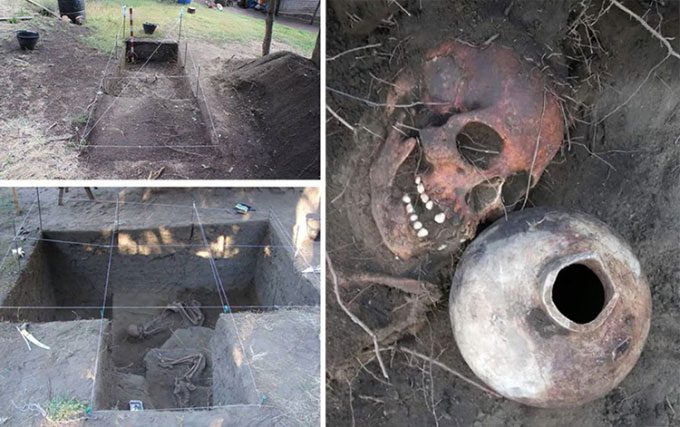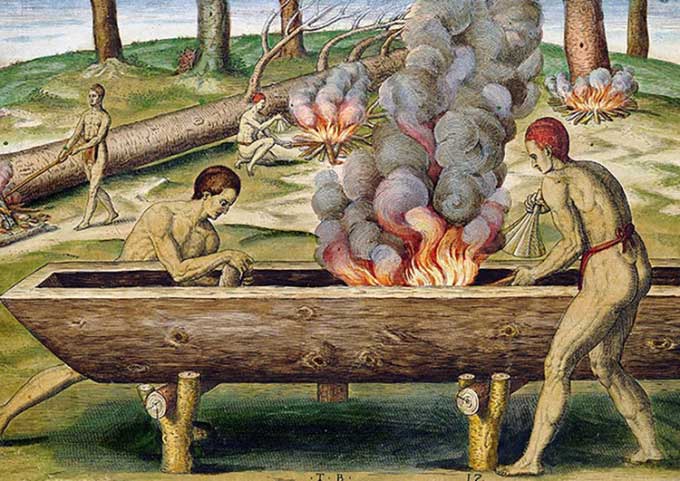New discoveries reveal that the practice of burying the dead in canoes has occurred across South America since pre-Columbian times.

Excavation site of the remains in Patagonia. (Photo: Pérez et al., 2022, PLOS ONE, CC-BY 4.0)
According to a study published in the journal PLOS ONE on August 24, the remains discovered at the Newen Antug burial site of the Mapuche people, located in the Chapelco mountain range in Patagonia, Argentina, may represent the earliest example of burying the dead in canoes in South America.
The 890-year-old skeleton was identified as belonging to a young woman who died between the ages of 17 and 25, though the cause of death remains unclear. She was buried with a collection of artifacts, including a ceramic vessel and nearly a dozen freshwater mollusk shells. Her face and arms appeared to be painted red.
The wooden canoe – also known as wampo – was crafted from Chilean cedar and hollowed out by fire. Researchers found nearly 600 pieces of charred wood at the excavation site.

Reconstruction of the woman buried in the wooden canoe with artifacts. (Photo: Pérez et al., 2022, PLOS ONE, CC-BY 4.0)
Using radiocarbon dating on the bones, researchers indicated that the woman died around the year 1142, suggesting she may have been a member of the Mapuche civilization – the largest indigenous group in South America.
This finding challenges the notion that canoe burials only occurred after the Spanish colonial period and reaffirms that they were practiced throughout South America since pre-Columbian times.
Not only in South America, the custom of burying individuals in canoes or boats has been practiced historically by various cultures, particularly the Vikings in Scandinavia, who were known for burying their warriors and leaders in traditional longboats.
Most examples of boat burials are found in cultures deeply connected to their seafaring lives, but this does not apply to the recent discovery at Newen Antug.

Reconstruction of how the Mapuche made wooden canoes from cedar trunks. (Photo: Pérez et al., 2022, PLOS ONE, CC-BY 4.0)
Instead, researchers suggest that the canoe served a more metaphorical role, acting as a symbolic object to assist the deceased in their journey to the afterlife. The artifacts found within the canoe may have been offerings to a mythical figure – the canoe pilot – during that perilous voyage.
“This figure helps souls navigate challenges. His service is rewarded with llangka, a type of blue stone believed to hold great value. The story of the journey to the afterlife is passed down orally by the Mapuche, describing souls drifting on underground rivers,” the authors of the study wrote.





















































